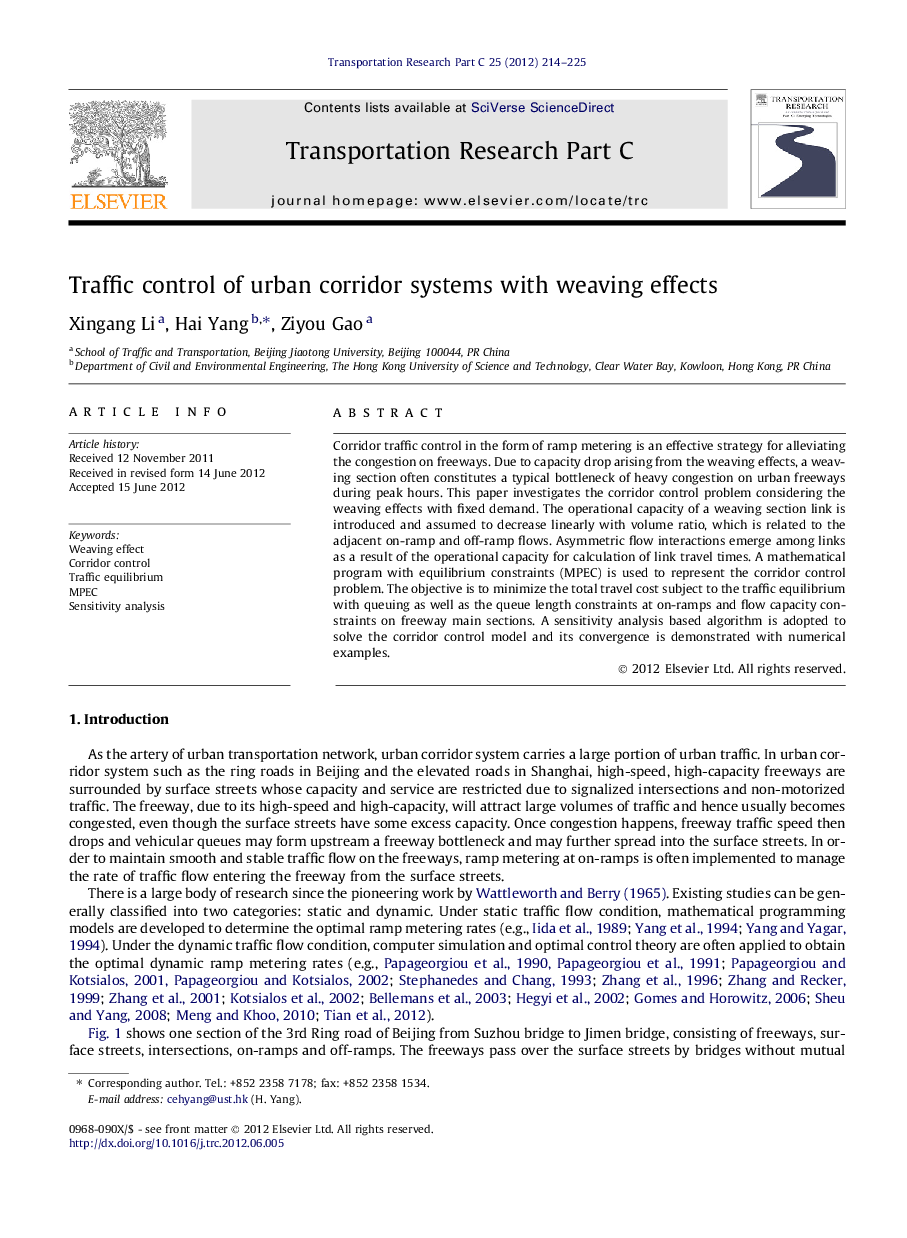| Article ID | Journal | Published Year | Pages | File Type |
|---|---|---|---|---|
| 525222 | Transportation Research Part C: Emerging Technologies | 2012 | 12 Pages |
Corridor traffic control in the form of ramp metering is an effective strategy for alleviating the congestion on freeways. Due to capacity drop arising from the weaving effects, a weaving section often constitutes a typical bottleneck of heavy congestion on urban freeways during peak hours. This paper investigates the corridor control problem considering the weaving effects with fixed demand. The operational capacity of a weaving section link is introduced and assumed to decrease linearly with volume ratio, which is related to the adjacent on-ramp and off-ramp flows. Asymmetric flow interactions emerge among links as a result of the operational capacity for calculation of link travel times. A mathematical program with equilibrium constraints (MPEC) is used to represent the corridor control problem. The objective is to minimize the total travel cost subject to the traffic equilibrium with queuing as well as the queue length constraints at on-ramps and flow capacity constraints on freeway main sections. A sensitivity analysis based algorithm is adopted to solve the corridor control model and its convergence is demonstrated with numerical examples.
► Modeled ramp metering control on a corridor with weaving effects. ► Formulated as a mathematical program with equilibrium constraints. ► Solved with a sensitivity analysis based algorithm and demonstrated with numerical examples.
